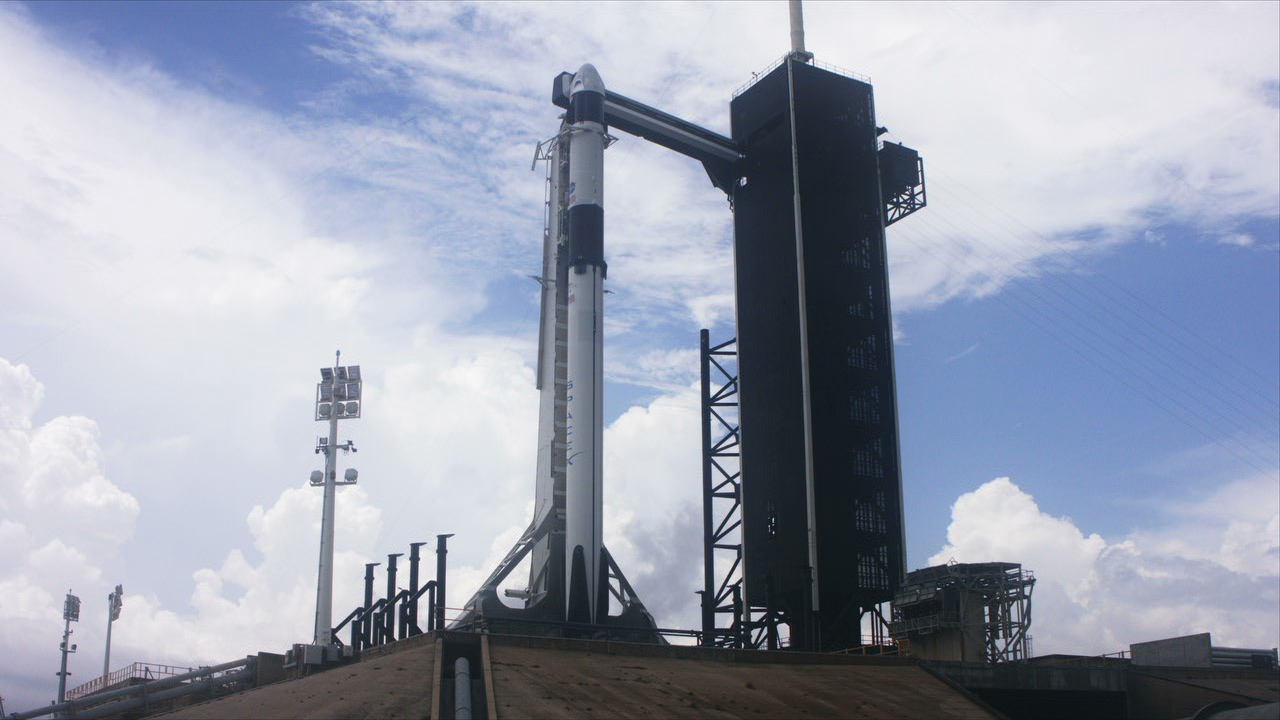Why would a little storm in the distance shut down historic SpaceX launch?
Things aren't looking good for Saturday.

The SpaceX Crew Dragon spacecraft is now scheduled to launch tomorrow (May 30) after weather forced a launch delay Wednesday (May 27). If bad weather strikes the Cape Canaveral, Florida launch site again at the wrong time, the launch will once more be delayed.
But why should some ugly weather scrub a Falcon 9 rocket launch? When NASA astronauts Doug Hurley and Bob Behnken do take off in their SpaceX-built rocket, it will mark the first attempt to put humans in orbit from U.S. soil in a decade. And the rocket is powerful enough to punch through the atmosphere and into space. Why should a few clouds bother it?
First, launches like these have to be perfectly timed. For the craft to reach the International Space Station it must launch at the scheduled minute, or wait for another opportunity. So any weather delay is important.
And the fact is, NASA has had a long and unfortunate history with launch weather, as NASA Spaceflight.com noted May 24. Freezing weather before a 1986 Space Shuttle Challenger launch wrecked the rubber O-ring seals on the solid rocket boosters. The shuttle exploded 73 seconds after launch and all seven astronauts on board died. The Apollo 12 mission survived a pair of lightning strikes, but they scrambled instruments during takeoff and triggered alerts that nearly led NASA to abort the mission.
Related: How to watch the historic SpaceX astronaut launch online
Wednesday's launch was canceled within half an hour of the planned takeoff because of lightning in the area and a storm cloud with an "anvil" formation. That cloud was close enough to the launch site that, when it didn't clear up, NASA said it violated the agency's weather rules. And the launch itself could have triggered lightning strikes on the spacecraft, according to NASA administrator Jim Bridenstine.
Lighting isn't the only weather feature NASA tracks before a launch though. During the Space Shuttle era, NASA published criteria for those launches. Some of the rules included:
Get the world’s most fascinating discoveries delivered straight to your inbox.
- The temperature must not have fallen below freezing in the last 24 hours, and must have remained above a 41 degree Fahrenheit (5 degree Celsius) average in the same period.
- The temperature must not exceed 99 F (37.2 C) for more than 30 consecutive minutes after fueling begins.
- Wind must be forecast to stay under 48 mph (77 km/h) for the three hours after fueling begins, and can't peak higher than 39 mph (62 km/h) during launch.
- There must be no rain, snow or hail on the launch pad or in the flight path.
There were also a complex series of rules related to electric fields and lighting designed to avoid lightning strikes on the vehicle. But the most straightforward was this:
"Do not launch when lightning is observed and the cloud that produced the lightning is within 10 nautical miles of flight path. Launch may not occur until 30 minutes has elapsed since the lightning flash, or the cloud has moved more than 10 nautical miles away."
All this could spell further trouble for NASA and SpaceX's commercial crew plans for the weekend. National Weather Service reports show rain and thunderstorms coming and going all day today (May 29) at Cape Canaveral, and similar conditions are in the forecast for tomorrow's launch.
- Here's every spaceship that's ever carried an astronaut into orbit
- SpaceX's historic Demo-2 astronaut launch explained
- In photos: SpaceX's historic Demo-2 test flight with astronauts
- 10 bizarre things Earthlings have launched into space
Originally published on Live Science.
OFFER: Save 45% on 'How It Works' 'All About Space' and 'All About History'!
For a limited time, you can take out a digital subscription to any of our best-selling science magazines for just $2.38 per month, or 45% off the standard price for the first three months.

 Live Science Plus
Live Science Plus






